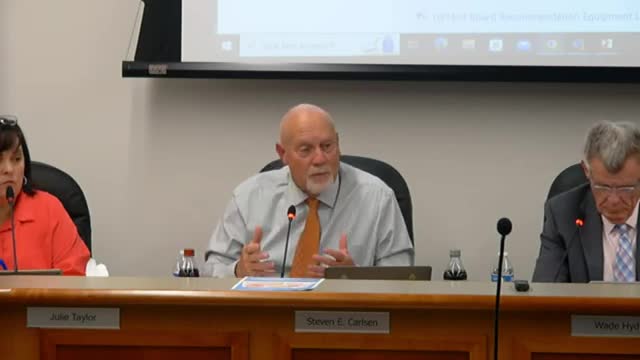School board pushes for urgent facilities upgrade plan
August 15, 2024 | Box Elder School District , Utah School Boards, Utah
This article was created by AI summarizing key points discussed. AI makes mistakes, so for full details and context, please refer to the video of the full meeting. Please report any errors so we can fix them. Report an error »

In a recent meeting, the Box Elder School District Board discussed plans for a new gymnasium and facility improvements aimed at enhancing educational environments for students. The proposed gym would serve as a venue for winter sports and other activities requiring a gymnasium, addressing a long-standing need within the district.
The board revealed that a recent survey indicated only 50% of respondents were in favor of a bond to fund these improvements, prompting a cautious approach to the proposed funding. Despite this, the board felt encouraged by a 58% indication of support for the project, leading them to consider moving forward with a more modest bond proposal rather than a larger one.
Financial implications were also a key topic, with the board noting that for a median-priced home in Box Elder County, valued at $450,000, property taxes would increase by approximately $238 annually to support the bond. This figure would double for homes valued at $900,000, highlighting the varying impacts on residents based on property values.
The board emphasized the importance of community engagement over the next three months to build support for the bond, which they believe is crucial for addressing the aging infrastructure of schools in the district. The last successful bond was passed 18 years ago, leading to significant renovations in local high schools.
Board members shared personal anecdotes about the evolution of educational spaces and the need for modern facilities that reflect current teaching methodologies. They expressed a commitment to transparency and accountability, assuring the community that funds would be used effectively to improve educational outcomes.
The discussion also touched on the necessity of reconfiguring grade levels within schools to alleviate overcrowding and enhance educational efficiency. A survey indicated that over 80% of respondents supported this reconfiguration, although the board acknowledged that not all community members would agree with the changes.
Overall, the board is focused on long-term strategies to improve educational facilities, emphasizing that investments made now will yield significant benefits for future generations of students. They are determined to engage the community in understanding the importance of these improvements and the efficient use of taxpayer dollars in the process.
The board revealed that a recent survey indicated only 50% of respondents were in favor of a bond to fund these improvements, prompting a cautious approach to the proposed funding. Despite this, the board felt encouraged by a 58% indication of support for the project, leading them to consider moving forward with a more modest bond proposal rather than a larger one.
Financial implications were also a key topic, with the board noting that for a median-priced home in Box Elder County, valued at $450,000, property taxes would increase by approximately $238 annually to support the bond. This figure would double for homes valued at $900,000, highlighting the varying impacts on residents based on property values.
The board emphasized the importance of community engagement over the next three months to build support for the bond, which they believe is crucial for addressing the aging infrastructure of schools in the district. The last successful bond was passed 18 years ago, leading to significant renovations in local high schools.
Board members shared personal anecdotes about the evolution of educational spaces and the need for modern facilities that reflect current teaching methodologies. They expressed a commitment to transparency and accountability, assuring the community that funds would be used effectively to improve educational outcomes.
The discussion also touched on the necessity of reconfiguring grade levels within schools to alleviate overcrowding and enhance educational efficiency. A survey indicated that over 80% of respondents supported this reconfiguration, although the board acknowledged that not all community members would agree with the changes.
Overall, the board is focused on long-term strategies to improve educational facilities, emphasizing that investments made now will yield significant benefits for future generations of students. They are determined to engage the community in understanding the importance of these improvements and the efficient use of taxpayer dollars in the process.
View full meeting
This article is based on a recent meeting—watch the full video and explore the complete transcript for deeper insights into the discussion.
View full meeting

